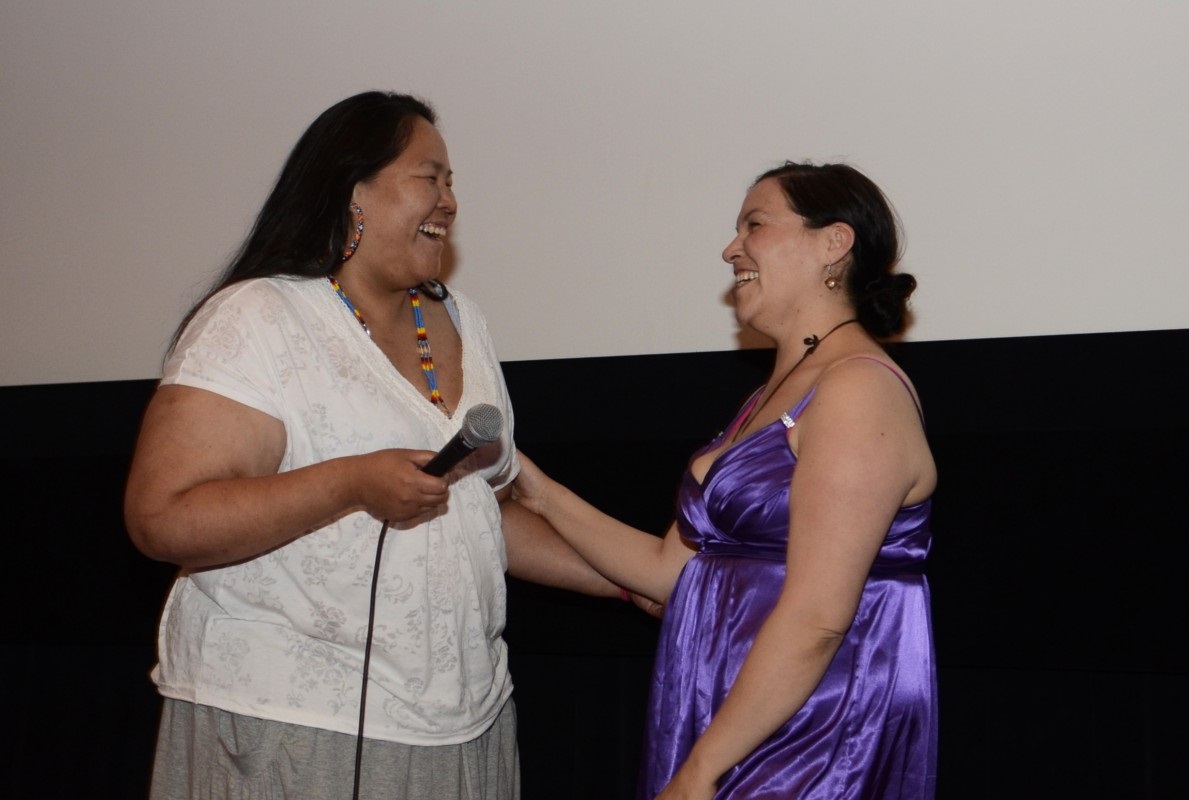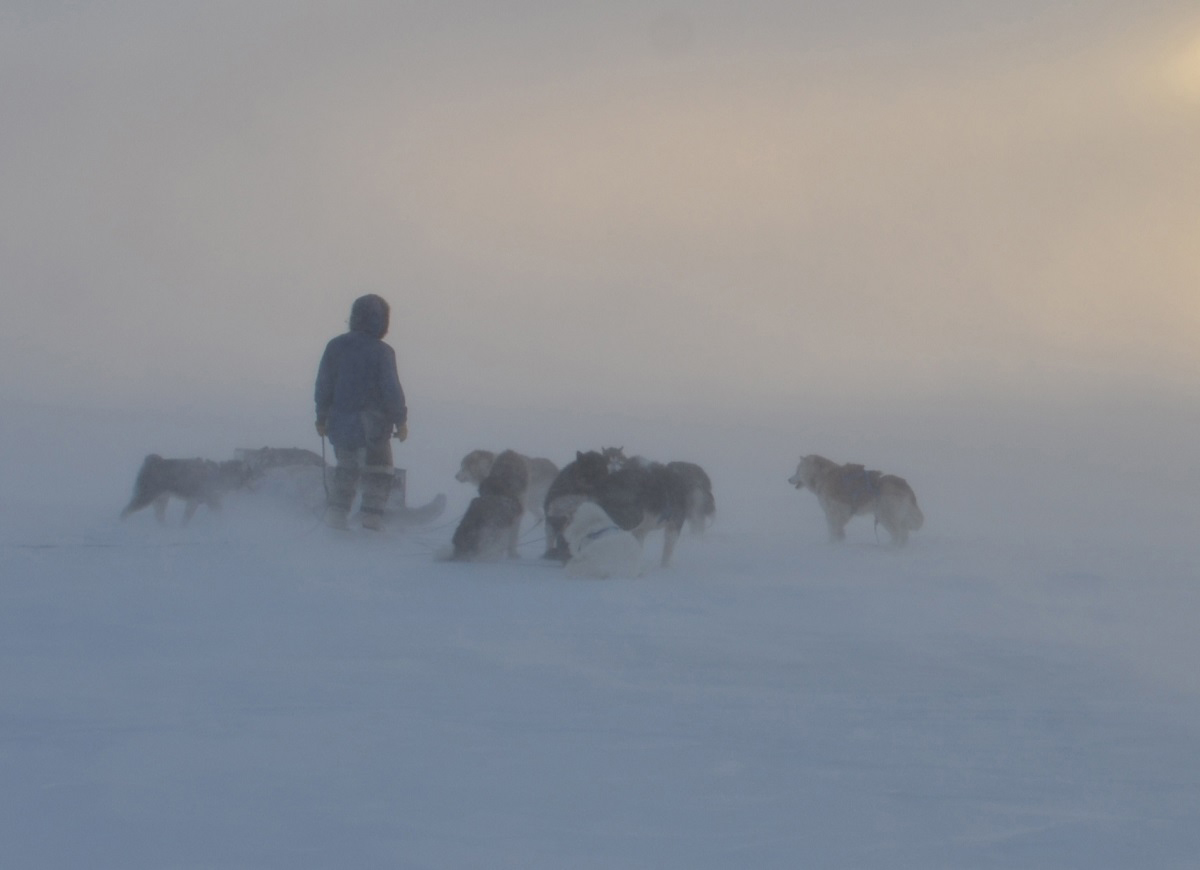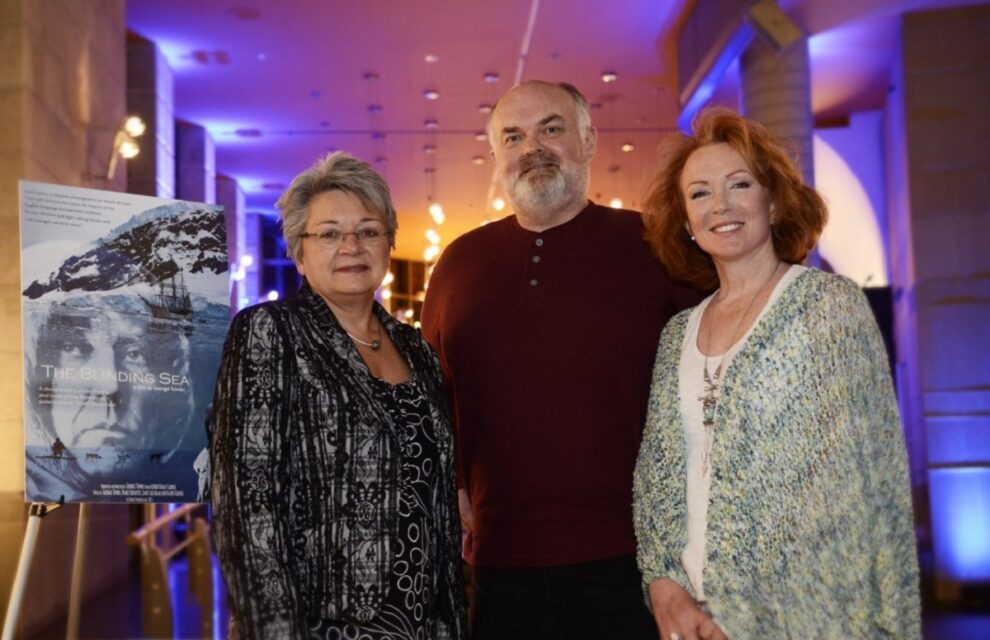I mentioned in a blog yesterday that I had just received a lovely message about my work as film-maker from Mary Simon, the Governor General of Canada. https://www.evidentia.net/evidentia/in-the-eye-of-the-beholder/
Mary Simon is a leading member of the Inuit nation of Nunavik, in northern Quebec, and has had a distinguished career in public service. I first interviewed her back in the 1980s, when reporting for BBC Radio on the forced relocation (deportation) of entire Inuit communities from one site to another by the federal government of Canada. I occasionally met her from time to time thereafter.
Then, several years before Mary Simon became Governor General, I thought I had a pretty good mid-length version of The Blinding Sea ready. It came to 52 minutes. So I invited her to present the film to a private audience in Montreal. In the feature photo at the top of this blog, Mary Simon appears on the left, I am standing in the middle, and Marie Frenette appears on the right.
I also invited two extraordinary Inuit throat-singers from northern Quebec to sing a few sets that evening: Nina Segalowitz and Taqralik Partridge.

As things turned out, that evening changed a great deal for me. Interacting with three Inuit women convinced me the film was important. Mary Simon provided me with advice and encouragement, setting my film squarely in the context of Inuit history and the circumpolar North. In listening to her that evening, I realized I had not quite finished making the film. Actually, she nudged me gently back to the drawing board. I ended up devoting several years to remaking the film as a feature (1 hour 48 minutes).
Nina Segalowitz and Taqralik Partridge sang beautifully that evening. Nina spoke movingly about why the film mattered to her. She spoke particularly about the way Roald Amundsen had adopted a little Chukchi child, Cakonita, taking her from Siberia all the way to Norway. This resonated strongly with Nina, since it reminded her of the way she had been adopted as a little Inuk girl in northern Quebec by someone living in Montreal, 1800 kilometres to the south. It took Nina many years to discover who she really was as a member of the Inuit nation. Becoming a throat-singer was part of her process of self-discovery, and this is something she shares with many other people.
Marie Frenette, pictured above, provided her recording studio in Montreal for recording the narration and voice-overs done by character actors; she managed the jazz musicians and violinists I hired to create the musical score for the film; Marie helped me edit hundreds if not thousands of files in Cubase, a digital audio workstation developed for music and MIDI recordings; and she provided a lot of expertise in the choice and placement of more than one hundred musical compositions for the film. Above all, Marie sings beautifully on the soundtrack.
I have dedicated the film to Marie.
In other words, to keep a long story short, or a short story long (?), the process of creating The Blinding Sea was an interactive one. I also learned several important lessons while touring the film in Europe, and made changes based on critical feedback I got there.


